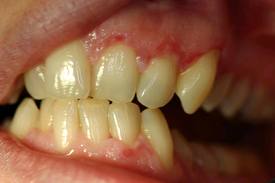
There are three types of Pemphigoids. They are: Bullous, Myxoid, and Systemic. People with bullous Pemphigoid can develop up to four blisters on their chest. They leave a large red sore which often heals without scars.
Systemic Pemphigoids can occur on the neck, back, legs, or arms. They are a result of a severe reaction to an allergy. Myxoid Pemphigoids can occur on the face, throat, or upper chest. Systemic pemphigoid can be diagnosed by a skin biopsy, where a sample of a patient's skin is taken to determine the cause of the condition. The biopsy will determine if there is an allergic reaction.
All three types of Pemphigoids are very painful. The most common symptom of bullous pemphigoid is pain in the chest. This pain is often described as "chemo." Cough, fever, vomiting, diarrhea and a loss of appetite are also possible.
Myxoid Pemphigoids are not painful, but they do cause itching and burning sensations. They are not contagious, although the same symptoms that can cause it are contagious. Systemic Pemphigoids can spread from person to person through direct contact or sharing. The cause is unknown.
Bullous pemphigoid have redness, swelling and pain in the area of the rash. The blister often causes bleeding when scratched, pecked, or cut. Pemphigoids also cause blistering on the eyelids, ears, and tongue. Myxoid Pemphigoids have a whitish, creamy appearance to the skin.
Pemphigoids may have many different types of symptoms. If left untreated, they can cause permanent scarring. This scarring makes life difficult because of their sensitivity. Pemphigoids can cause a wide variety of allergic reactions including hives, swelling and redness of the mouth and lips. and thickened, painful blisters on the skin.
Pemphigoids are a serious problem because of their ability to produce pus
If they are not treated they can lead to abscesses, permanent damage to the bone, nerve damage, and even the development of bone-threatening diseases. Pemphigoids cannot be cured but they can be controlled and delayed.
Most cases of bullous pemphigoid require some type of medication. Antibiotics can be prescribed to kill off bacteria, which causes the bacteria that causes pemphigoid. Some people will also want to try an immunosuppressant to slow down the bacterial growth. In some cases, the pus may stop draining through the nose or mouth. You may want to see your doctor about trying to shrink the puss that drains through the nose.
In most cases, the symptoms of Pemphigoids are not severe, but can still make life difficult. If left untreated, bullous pemphigoid can cause long term scarring and a loss of mobility. Your doctor may refer you to an ear, nose and throat specialist who can look at your skin. for more information on how to control the problem.
While the cause of Pemphigoids is not known, there are some treatments that can provide short and long term treatment. Some of these treatment options include:
Surgery – If you have long-standing inflammation or bleeding, your doctor may recommend a surgical treatment. Some of these treatments can include, interdigital banding, microsurgery, and endoscopic sinus surgery. and sometimes local anesthesia can be given. These surgical treatments work by taking small pieces of your skin and placing them on the affected areas. If you are prone to an allergic reaction, your doctor may need to give you medication to help lessen the effects of the surgery.
Home Treatment – There are many home treatments that can be used to treat bullous pemphigoid
One of these treatments includes applying a cream or ointment over the affected area and resting it for several days. Applying petroleum jelly on the area will help reduce the irritation and swelling.
Natural Treatments – Other treatments include: using herbal tea to treat the inflammation, using essential oils to relieve the pain, and avoiding scratching and biting of the inflamed area. Many natural ingredients can also help relieve the pain. the discomfort and inflammation caused by bullous pemphigoid. You should see your doctor for more information on these treatments.